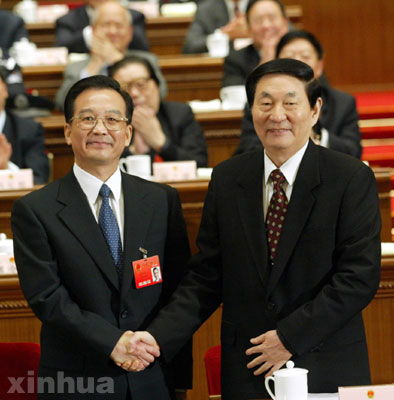中國人的性格
(又名"中國人的素質")[美] 亞瑟.亨.史密斯 (Arthur H.Smith) 著
(又名"中國人的素質")[美] 亞瑟.亨.史密斯 (Arthur H.Smith) 著

Introduction to the 2003 edition by Lydia Liu, University of Michigan
Chinese Characteristics (1894) was the most widely read American work on China until Pearl Buck’s The Good Earth (1931). It was the first to take up the task of analyzing Chinese society in the light of “scientific” social and racial theory.
Written as a series of pungent and sometimes comic essays for a Shanghai newspaper in the late 1880s, Chinese Characteristics was among the five most read books on China among foreigners living in China as late as World War I and it was read by Americans at home as a wise and authentic handbook. The book was quickly translated into Japanese and just as quickly into Chinese. It was accepted by the Chinese — and has maintained its authoritative status for over a century — as the quintessential portrait of the Chinese race drawn by a Westerner.
Lu Xun, the most prominent Chinese cultural critic of the early twentieth century, urged his students to study and ponder Smith’s message, which was very widely debated in Chinese student circles. Within the last decade (the 1990s), two different, new translations of Smith’s book were published in China and both editions have enjoyed wide distribution and readership. In the West, particularly since World War II, Chinese Characteristics has been widely quoted (though seldom read) as a purported example of "Sino-myopia" and "Orientalism". Despite such Western pseudo-intellectual bias, Smith’s arguments retain the power to provoke critical introspection among Chinese and, for the honest, among Westerners as well.
Arthur H. Smith, D.D., was born in Vernon, Connecticut and graduated from Beloit College before serving with the Wisconsin infantry for a few months during the Civil War. A college friend called Smith an accomplished storyteller and “the funniest man I ever knew.” After he attended Andover Theological Seminary, in 1872 the American Board of the Commissioners for Foreign Missions sent him and his wife, Emma Jane Dickenson, to China. They lived in the north China village of Panjiazhuang for several decades, aspiring to fit in as “natives.” Arthur Smith steeped himself in Chinese classical literature and folklore, leading to a stream of articles and books, including Proverbs and Common Sayings from the Chinese (1886; 1916); Village Life in China: A Study in Sociology (1899); and China in Convulsion (1901), a two-volume study of the Boxer Uprising.
EastBridge D’Asia Vu Reprint Library 2003 342 pp index
BIOGRAPHIES
ARTHUR H. SMITH

Arthur Henderson Smith (1845-1932)
A financier who from his early entrance into banking has made a thorough study of that wide and complicated field, and to whom is due so much of the splendid success of the First National Bank of Chico, is Arthur H. Smith, that enterprising institution’s president. He was born at Osawatomie, Miami County, Kans., the son of Reuben Smith, a native of Manchester, England, who migrated to Iowa and later removed to Kansas. Reuben Smith was in the Civil War as a member of the Second Missouri Cavalry Regiment, and having reenlisted served in still another regiment. He was a farmer who entered politics as an active Republican, and was sent to both the Assembly and the State Senate. After that, he engaged in banking at Osawatomie, and in that town, so historic for its association with John Brown, he died. Reuben’s wife had been Maria C. Kyle, a native of Indiana, and she became the mother of six children, the oldest and the only one who came to California being the subject of our sketch.
Arthur H. Smith was born June 7, 1876, was educated at the local public schools of his neighborhood, and followed farming until he was fifteen. At that age he entered the Farmers’ and Mechanics’ Bank, at Osawatomie, and there continued for ten years, finally serving as assistant cashier.
In 1902, Mr. Smith came farther west, to Reno, Nev., where he accepted the position of assistant cashier in the Farmers’ and Merchants’ National Bank. In the spring of 1905, however, he left Nevada and moved to Humboldt County, Cal., where he organized the Bank of Fortuna, and filled the position of cashier. At the end of a year he sold out to Mr. Newell; and in March, 1907, he came to Chico. Soon after his arrival here he organized the First National Bank of Chico, the doors of which were opened on August 1 of that year, when the concern started with a capital of $50,000. There again Mr. Smith was cashier, while B. S. Kenis was the first president, being succeeded by W. J. Miller who remained president until his death. Then, on January 9, 1915, Mr. Smith assumed the duties of that very responsible position. The bank now has over $1,500,000 in deposits. In 1914, Mr. Smith was one of the organizers of the People’s Savings Bank, and a director in that institution. He is a director in the Bank of Durham, also a director of the Business Men’s Association, is a Republican in politics, and an influential leader in civic affairs.
Arthur H. Smith was united in marriage with Miss Daisy Baker, a native of Chico, a daughter of the pioneer B. B. Baker, a sketch of whom appears on another page of this work. Mr. and Mrs. Smith are the parents of one child, Bertice. By a former marriage Mr. Smith had two children, Kyle and Elizabeth.
Mr. Smith was made a Mason in Osage Valley Lodge, No. 24, A. F. & A. M., Kansas, and is also a member of the Chico Lodge of B. P. O. Elks. He was selected as chairman of both the second and third Liberty Loan Committees and in both campaigns Butte County exceeded her quota.
Transcribed by Vicky Walker, 1/23/08.
Source: "History of Butte County, Cal.," by George C. Mansfield, 656-659, Historic Record Co, Los Angeles, CA, 1918.
原文經過轉碼軟件處理,若有少量錯別字,敬請原諒。
Original : http://www.sd-online.com/big5/ttt2/www1/novels/xinge/xinge.html
Original : http://www.sd-online.com/big5/ttt2/www1/novels/xinge/xinge.html

溫家寶 總理 和 朱鎔基 總理
沒有留言:
張貼留言